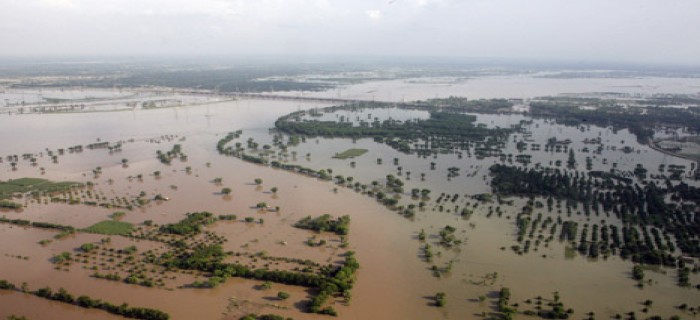
Climate change connection between Central India and Pakistan floods
03 Sep 2022
Climate change is connecting the world better than other factors, it seems. Experts have pointed out that climate change is altering the track of monsoon systems, forcing them to travel in westerly direction through Central parts of India, and causing the recent floods in Pakistan. Most of the monsoon low pressure areas or depressions are now travelling south of their position, across Central India keeping the rain restricted to the region. A few instances like floods in Madhya Pradesh and Rajasthan are result of this shift in the movement of monsoon systems. Most importantly, this also triggered massive flash floods in Sindh and Balochistan region that have reportedly claimed over 1,000 lives, points out an assessment by Climate Trends, based on the observations of meteorologists. The Climate Trends assessment quotes Mahesh Palawat, Vice-President Meteorology and Climate Change, Skymet Weather; G P Sharma, President, Meteorology and Climate Change, Skymet Weather; and also Anjal Prakash, Research Director, Bharti Institute of Public Policy, Indian School of Business and IPCC Lead Author. Referring to the Pakistan floods, Palawat stated that it was a rare event as it was not usual to see weather systems travelling in such a direction. The two back-to-back monsoon depressions travelled right from Bay of Bengal via Central India to South Sindh and Balochistan in Pakistan. While easterly winds have been pushing these systems towards Pakistan region, westerly winds were approaching the region from Arabian Sea. Convergence of opposite airmass led to formation of Col region over Pakistan, trapping the system over Sindh region and Balochistan for a longer duration, resulting in torrential showers. Since it’s an arid region, the geography of land mass does not allow it to absorb huge amounts of water very quickly, which triggered flash flooding. “This can be very well attributed to climate change, which has altered the track of Monsoon systems, which are now more travelling in westerly direction through Central parts of India. In usual scenario, these systems tend to travel across Northwest India and reach North Pakistan due to interaction with Western disturbance. However, due to change in movement of monsoon systems, we have witnessed extremely heavy rainfall over South Sindh and Balochistan,” Palawat explained. According to Sharma, there was no doubt about the fact that ‘most of the monsoon weather systems have been travelling across Central parts of the country, changing the area of rainfall’.


leave your comment